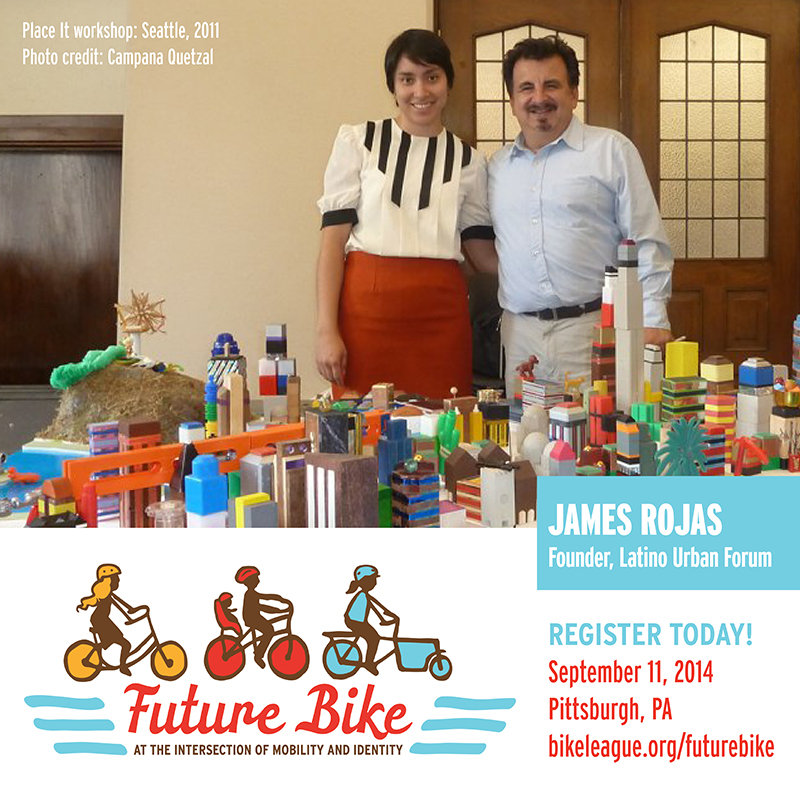DISCOVER YOUR LOCAL BICYCLING COMMUNITY
Find local advocacy groups, bike shops, instructors, clubs, classes and more!
Future Bike: James Rojas, Equity and Design
 Usually when you start a conference call, the participants chit chat for a few minutes as you wait for everyone’s voice to chime in. When we did our first planning call with James Rojas, the keynote speaker for our upcoming Future Bike conference, things were a little different.
Usually when you start a conference call, the participants chit chat for a few minutes as you wait for everyone’s voice to chime in. When we did our first planning call with James Rojas, the keynote speaker for our upcoming Future Bike conference, things were a little different.
“I’ve been creating a game about childhood experiences, and how to get people to bring that to the design table,” James said after I inquired about his recent work. Who has time for small talk when you’ve got ideas like that to share?
What’s so exciting about James’ work is that he asks you to bring your life into the design room, not leave it outside. Because he does not divide expert design from lived experiences, James’ message can help make equitable bike planning into a community engagement tool.
I first met James in late 2008, at a sustainability event at the Natural History Museum of Los Angeles County. As I wandered among the presenters, I was of course drawn to the table covered in Legos and other small toys. Next to the table stood a mustachioed man who beckoned to all and invited us to use the little figures and toys to design our ideal built environments.
At the time, James was a planner at Metro, Los Angeles’ transit authority and metropolitan planning organization, and later that day he gave a talk about a project to learn how Latinos used sidewalks and yards in East L.A. James had been instrumental in creating a jogging path around Evergreen Cemetery in Boyle Heights, and his work on Latino placemaking, which he has written about recently here, emphasizes the value of supporting organic connections between cultural identity, health, and place.
When I connected with James and the concept of Latino urbanism, I was developing my anthropology dissertation project of understanding what made bicycling high and low status in Los Angeles. It made a lot of sense to me that culture would factor into how people experience and shape their neighborhoods. But over the years of my fieldwork, I came to see James in a different light: this was a person who showed that we can stay rooted in where we’re from at the same time that we work as experts. We can be urban design experts and bring what makes us feel at home into the process. This message has meant a lot to me as a Chicana bike advocate.
Thinking of innovation as a combination of expert knowledge and lived experience illustrates an important distinction between “equity” and “diversity.” Diversity might not get beyond the level of tokenism, where different folks are visible but not powerful. Equity means engaging minds and perspectives, asking people to draw on their diverse experiences to change our shared landscapes.
Diversity is new inputs; equity is new outcomes.
This idea shaped the agenda for Future Bike, and it is fitting that James would be there to show our participants how design can be a driver of bike equity and civic engagement.
So if you’re planning to attend Future Bike, think about where you came from, and bring it with you as we talk about where we want the bike movement to go. Register here today.